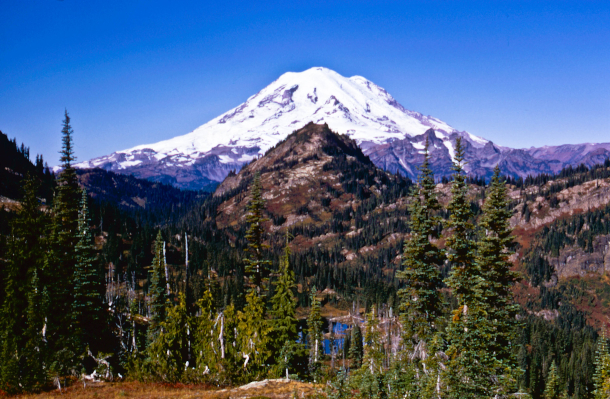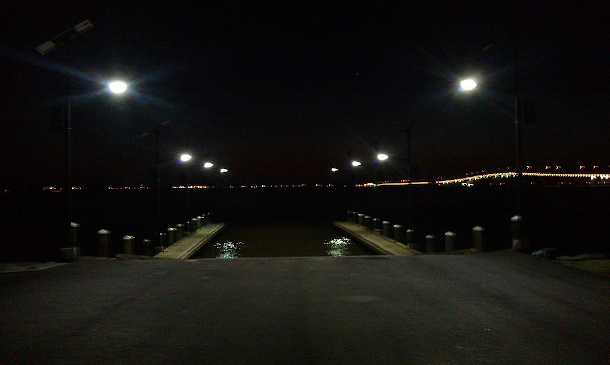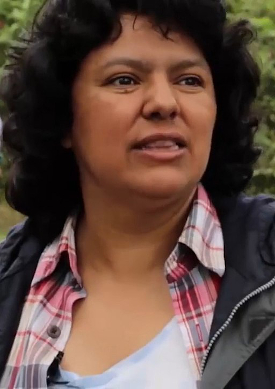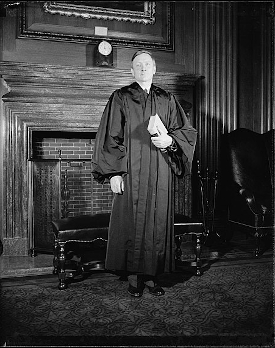Beyond the Headlines
Air Date: Week of April 15, 2022

View of Mt Rainier from Cougar Lakes area of William O. Douglas Wilderness, named after the Supreme Court Justice, on the Gifford Pinchot National Forest in Washington's Cascades. (Photo: U.S. Forest Service – Pacific Northwest Region, public domain)
Environmental Health News editor Peter Dykstra joins Host Bobby Bascomb to discuss how scientists at Stanford University have configured solar panels to produce a bit of electricity at night. On a somber note, a report finds that more than half of the 358 human rights activists who were murdered last year were in the business of defending land and native rights. Lastly, they commemorate the 50th anniversary of the Supreme Court case Sierra Club v. Morton, when the dissent of Justice William O. Douglas argued that inanimate objects like forests can have legal standing.
Transcript
BASCOMB: Well, it's time for a trip now beyond the headlines with Peter Dykstra. Peter is an editor with environmental health news. That's ehn.org and dailyclimate.org. Hey there, Peter, what do you have for us this week?
DYKSTRA: Well, hi, Bobby. One of the things that I just love about following Science and Environment issues, some things come at you totally out of the blue. Here's one that appeared last week in the journal Applied Physics Letters. And that's engineers and scientists at Stanford University, have found a way to have a solar panel generate electricity at night.
BASCOMB: Hmm, what now? You know, it's a little late for April Fool's here, Peter.
DYKSTRA: Yeah. And peer reviewed journals generally don't do April Fool's jokes. But here's what happened through the process of radiative cooling solar cells, like a whole lot of engineered things cool down slower than the night air. And the scientists have found a way to use that heat photons leaving the solar panels as they cool to provide a little extra bonus energy.

A boat ramp is being illuminated by solar powered lighting at night running from batteries. Brighter nights may follow as scientists at Stanford have found a way to generate electricity at night using solar panels. (Photo: Klau1983, Wikimedia Commons, CC BY-SA 3.0)
BASCOMB: Hmm, well, how little are we talking about here?
DYKSTRA: That's probably a very little little, possibly this is more curiosity than a breakthrough. But it's interesting just the same.
BASCOMB: Well, what else do you have for us this week?
DYKSTRA: A report out from two non government groups, Frontline Defenders, and The Human Rights Defenders Memorial, recorded that there were as many as 358 murders of human rights activists around the world in 2021. And that more than half of those activists killed were in the business of defending land and defending Native rights.

This is a photo of Honduran activist Berta Caceres, recipient of the 2015 Goldman Prize, most notable for being an environmentalist and fighting for the rights of indigenous people. She was murdered a year after receiving the prize. (Photo: UN Environment, Wikimedia Commons, CC BY 3.0)
BASCOMB: Yeah, it's an awfully dangerous thing to do to be a defender of the environment in so many places in the world. Here on the show, we've talked in the past about Berta Caceres. She won the Goldman prize in 2015, for her activism in opposition to a dam in Honduras, but she was killed just a year later, in 2016.
DYKSTRA: Murdered a year later, she gave her life fighting against this dam project. But the dam project eventually went away. Seven people were arrested after the international pressure and outrage about her death took hold. The dam project lost its funding. But this kind of thing happens round the world. The deaths took place in Latin America, in Africa and in Asia. The worst offenders were Colombia, Mexico and Brazil. Honduras is up there in the per capita basis as well. Here in this country, activists get beaten up, they lose their jobs, things like that. But rarely, if ever, does anybody get killed. So in the developing world, it's a different story.
BASCOMB: Mm hmm. Yeah. And you've always been great about reminding us of that. So so thank you. I hope though, that maybe you have something a little bit happier for us from the history books this week. What do you see?
DYKSTRA: A little bit happy but just fascinating, a 50th anniversary because on April 19 1972, the US Supreme Court heard a case Sierra Club vs. Morton. The Sierra Club actually lost this case in their opposition to a planned ski resort project of The Walt Disney Company right near Sequoia National Park. The dissenting opinion came from a remarkable man named Justice William O. Douglas, an absolute tree hugger on the Supreme Court, who'd have thunk it, who said that the forest itself had a stake in the case, quote, inanimate objects are sometimes parties in litigation.

In a dissenting opinion in the case of Sierra Club v. Morton, Justice William O. Douglas argued that inanimate objects, like trees or other natural entities, should have legal standing to sue in court. (Photo: Harris & Ewing, Public Domain)
The Sierra Club lost but a subsequent lawsuit stopped the building of the resort. William O. Douglas was a fascinating guy, a sitting Supreme Court Justice, who led a protest hike against another dam project along the Delaware River. He for years gave the court a green perspective as it were. He's someone that's not remembered often enough these days.
BASCOMB: That's amazing. So a sitting Supreme Court Justice argued that the standing forest had standing, legal standing in this case.
DYKSTRA: Just like the Lorax he spoke for the trees.
BASCOMB: All right. Well, thanks, Peter. Peter Dykstra is an editor with environmental health news. That's ehn.org and dailyclimate.org. We'll talk to you again real soon.
DYKSTRA: All right, Bobby, thanks a lot. Talk to you soon.
BASCOMB: And there's more on these stories on the Living on Earth website. That's loe.org.
Links
NPR | “Solar Panels That Can Generate Electricity at Night Have Been Developed at Stanford”
Mongabay | “More Than Half of Activists Killed in 2021 Were Land, Environment Defenders”
Living on Earth wants to hear from you!
Living on Earth
62 Calef Highway, Suite 212
Lee, NH 03861
Telephone: 617-287-4121
E-mail: comments@loe.org
Newsletter [Click here]
Donate to Living on Earth!
Living on Earth is an independent media program and relies entirely on contributions from listeners and institutions supporting public service. Please donate now to preserve an independent environmental voice.
NewsletterLiving on Earth offers a weekly delivery of the show's rundown to your mailbox. Sign up for our newsletter today!
 Sailors For The Sea: Be the change you want to sea.
Sailors For The Sea: Be the change you want to sea.
 The Grantham Foundation for the Protection of the Environment: Committed to protecting and improving the health of the global environment.
The Grantham Foundation for the Protection of the Environment: Committed to protecting and improving the health of the global environment.
 Contribute to Living on Earth and receive, as our gift to you, an archival print of one of Mark Seth Lender's extraordinary wildlife photographs. Follow the link to see Mark's current collection of photographs.
Contribute to Living on Earth and receive, as our gift to you, an archival print of one of Mark Seth Lender's extraordinary wildlife photographs. Follow the link to see Mark's current collection of photographs.
 Buy a signed copy of Mark Seth Lender's book Smeagull the Seagull & support Living on Earth
Buy a signed copy of Mark Seth Lender's book Smeagull the Seagull & support Living on Earth

